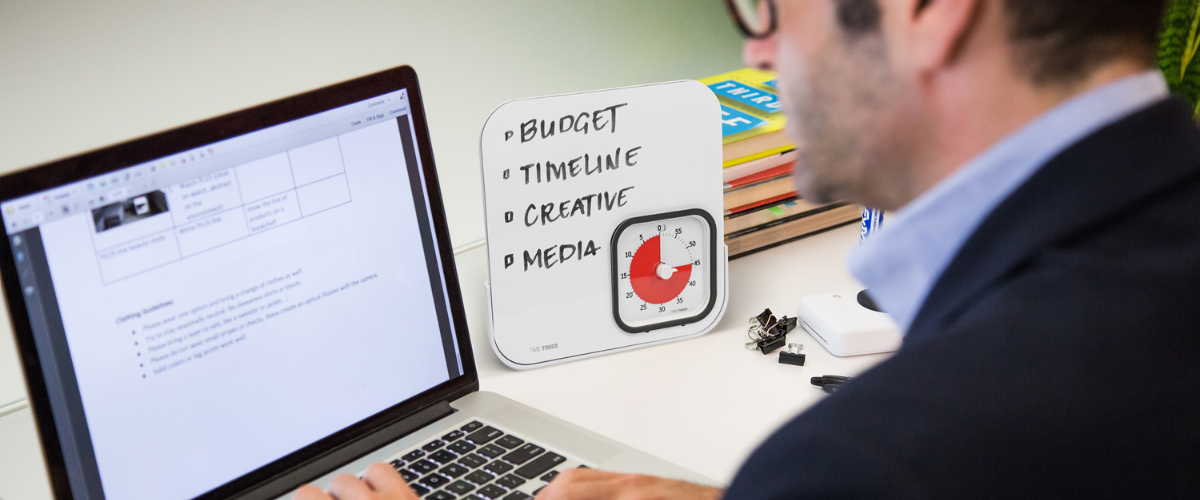Healthcare environments depend on effective time management to save money, ensure safety, meet compliance, maintain efficiency, and get good patient outcomes.
Medications have administration windows, therapy sessions have set durations; in short, every procedure has a time-sensitive protocol.
Healthcare professionals should not have to rely on mental calculations, wall clocks, or phone timers in moments when focus is critical.
Time Timer's PRO Applied line of visual timers are time-management tools designed to support time management in healthcare and therapeutic settings.
The Hidden Cost of Time Miscalculation in Healthcare
Medical errors are a leading cause of patient harm in healthcare settings in the United States.
Visual timers can help out here. For instance, these give nurses the ability to readily monitor timing with a quick glimpse at a timer, no need for mental calculations or recalling numerical starting times. That could help reduce errors during critical practices like medication administration.
Reducing cognitive load during high-stakes procedures can help workers stay focused on essential tasks like monitoring patient response, documenting interventions, responding to call lights, and maintaining sterile technique.
Another use is that visual timers can help improve resiliency to interruptions during IV push administration, as one study found.
Visual timers' disappearing colored disk provides instant passive feedback about elapsed and remaining time. That frees cognitive resources to go toward clinical tasks requiring professional judgment.
Engineering Time Management for Clinical Precision
The PRO Applied Personal 60-minute visual timer was engineered specifically for healthcare, therapeutic, and compliance-driven environments.
We did so by enhancing accessibility features like a larger easier-to-grip set knob that accommodates healthcare workers wearing gloves, professionals with arthritis or limited dexterity, and patients with motor-control challenges.
The neutral calming blue disk replaces the standard red. The idea was to reduce anxiety while still promoting focus in medical environments, where urgency is already present.
The customizable alert system lets users set volume levels for low or high progressive alerts. A silence button lets users mute the alarm altogether.
A memory-care unit could use gentle non-startling alerts, whereas a busy outpatient clinic need louder signals audible across treatment rooms.
It can also fit into a companion magnetic dry-erase board available from Time Timer.
Applications Across Healthcare Settings
-
Medication Administration and Compliance: Some medication-related protocols require patients to remain upright for 30 minutes post-administration to prevent complications. Others have specific set intervals between doses. Time Timer's PRO Applied visual timer with magnetic dry-erase board can be used by caregivers to write the medication name, dose, and instructions on the board while the timer tracks compliance intervals.
-
Physical and Occupational Therapy: Therapy sessions are built on structure and repetition, and visual timers can help manage exercise durations, rest intervals, and session timing. For instance, a stroke-rehabilitation patient might need to hold arm positions for 30 seconds, rest for 15 seconds, then repeat. Patients relearning daily living skills can benefit from using a timer to track grooming tasks for set intervals, as the timer offers objective measurement while giving patients visible goals to work toward.
-
Memory Care and Dementia Support: Cognitive decline can involve challenges with time blindness, leading to anxiety and repeated questioning. Visual timers' disappearing disk offers immediately understandable information in a visual form, useful for when there are challenges with verbal explanations.
-
Clinical Procedures and Diagnostic Testing: Precise timing is key in many diagnostic procedures, from lab tests needing specimens processed within specific windows to vital-sign monitoring in scheduled intervals. In outpatient settings, procedure rooms often treat multiple patients daily with different time requirements. Visual timers can be quickly reset and repositioned to maintain protocol adherence in a variety of contexts.
-
Food Safety and Infection Control: Stringent food-safety and infection- control timing requirements are a norm in hospital settings. Prepared foods have maximum holding times. Hand hygiene protocols specify minimum washing durations, which can be helped with the Time Timer Handwashing Visual Timer, a timer that can be paired with a soap dispenser by Time Timer. Environmental services teams follow precise contact times for disinfectants. Visual timers can make invisible time requirements visible in these situations.
-
Professional Efficiency and Workflow Management: Visual timers help with workflow management of time-sensitive priorities. For private-practice therapists, visual timers help maintain session boundaries. Practitioners and clients can see when a session is approaching conclusion, which can encourage a natural wrap-up instead of abrupt endings. In home healthcare, nurses may visit multiple patients daily with specific care protocols. A portable visual timers can help nurses ensure each patient receives appropriate treatment duration regardless of competing demands.
-
Building Independence and Self-Management: Time Timer's PRO Applied timers can support patient independence in many forms. From diabetes patients managing mealtime windows to seniors self-administering medications on schedule, visual timers can go beyond clinical oversight to engender independent function. By doing so, healthcare systems can improve compliance and experience fewer emergency interventions.
Check out Time Timer's PRO Applied visual timers for professional care!





